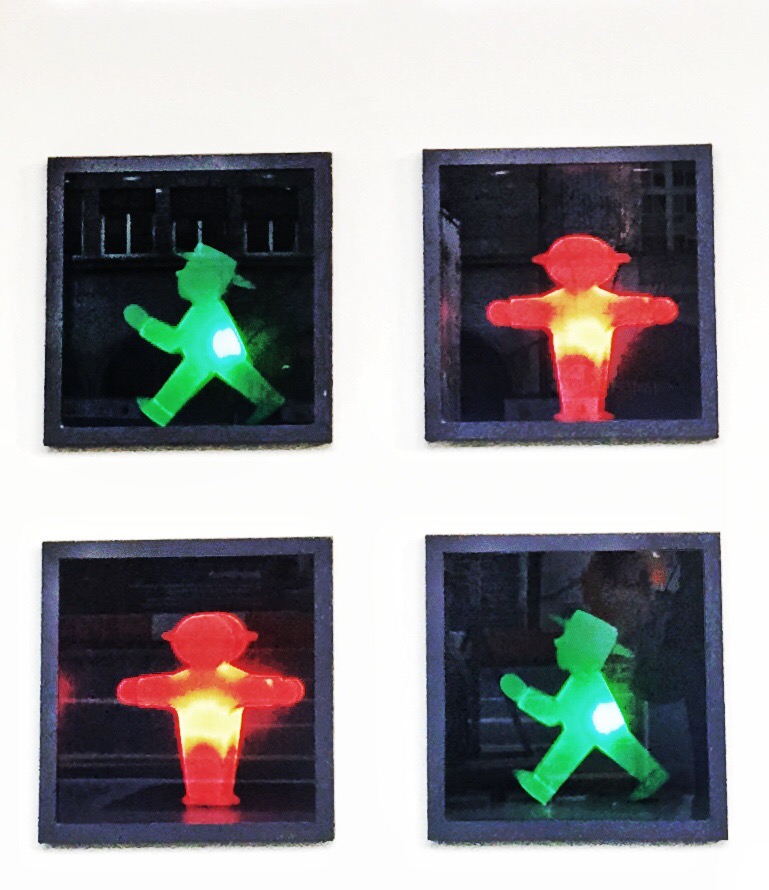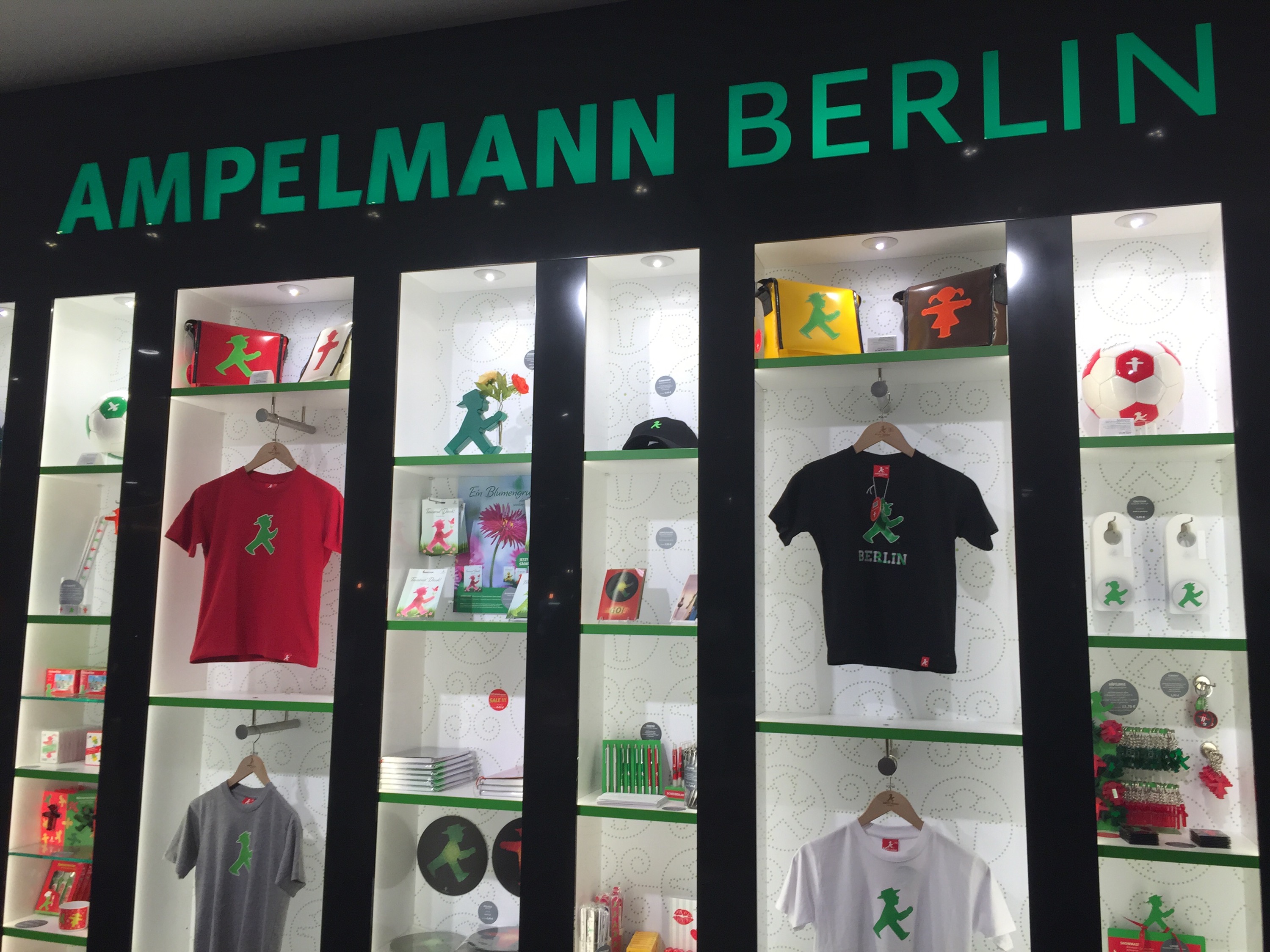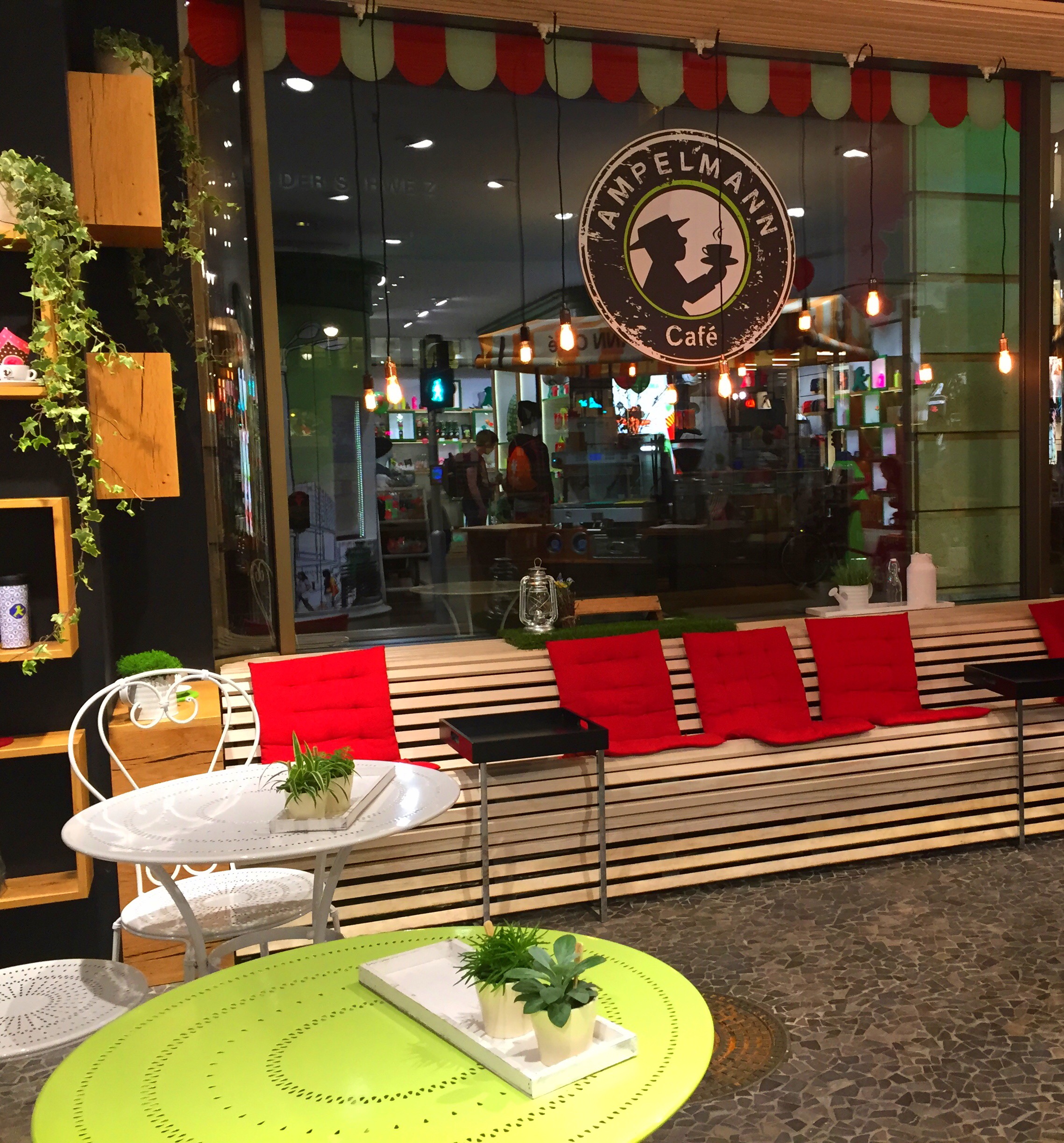Who knew that pedestrian crossing lights do not have to be so, well, pedestrian? The pedestrian crossing lights in Berlin are really special. The design of the so-called Ampel Men (Ampelmann), tare one of the holdovers from when Germany was a divided country. 
Contents
The Design of the Ampelmann
In 1961, traffic psychologist (now that’s specialised!), Karl Peglau, designed these signals to combat the growing number of pedestrian accidents in East Berlin. The traditional red, yellow and green are difficult for people with colour-blindness to decipher. My husband who is colour-blind, for example, just knows the order of the lights and goes by which one lights up even if he doesn’t know what colour it is.
The stop sign is a man in red with his outstretched hands meant to convey that you can not enter. The go sign is the man in his little hat walking with his hand showing a forward directional movement. The jaunty little hat was inspired by a photo of Erich Honecker, leader of the GDR (East Germany) from 1971 until 1989, wearing a straw hat.
It wasn’t cost effective to replace all the traffic lights in East Germany so they only did it for the pedestrian lights. People really liked the Ampel Men. Let’s face it – they are adorable with their big head and short, stout feet.

In fact, the Ampelmann were so popular that they had their own television series in East Germany. They were used to promote road safety and were incredibly popular – like the recent mega-hit from the Melbourne transportation advertising, Dumb Ways To Die.
The Survival of the Ampelmann Post-reunification
In 1994, the Ampel Men faced being phased out as West Germany began modernising East German infrastructure The people who campaigned to keep the Ampel Men won in the end. Instead of changing the design, the authorities agreed just to change the outdated electrical wiring on the lights.
Now, throughout Germany there are three variations of Ampelmann – each of the old East German and West German Ampelmann and a unified design from 1992. Each German state decides which version of Ampelmann it wants to use. In 2002, Ampelmann’s girlfriend, Ampelfrau was installed in some cities like Dresden.
The Ampelmann is not without controversy – they are part of a movement nostalgic for the days of East Germany. Because, you know, cardboard cars, secret police and separated families really were the good old days.
The Ampelmann Shop in Berlin
There is an Ampelmann shop on Unter den Linden, the main street in front of the Brandenburg Gate.
The Ampelmann Shop sells all sorts of novelties with the Ampelmann design such as magnets, cookie cutters, gummy candy and tee-shirts.

If you are looking for a cool gift from Berlin, these souvenirs at least have style and history behind them. I thought the gummy Ampelmann were so adorable I got them as treats for my children. Ampelmann themed gifts are some of the many cool souvenirs from Berlin that you can buy along with food and copies of the Berlin buddy bears. 
There is even an Ampelmann cafe in the shop. This little design really brings in the Euros!
A small section of the shop is devoted to pedestrian crossing lights in other parts of the world, sort of like a mini-museum of pedestrian crossing lights. Needless to say, it is completely fascinating for children – completely random and not very big.
Two of the more interesting crossing lights I saw were from Mongolia and The Netherlands.
Since 2011, crossing lights in Ulan Bator, the capital of Mongolia, show the country’s three national sports – archery, riding and wrestling.

Since 2000, this little girl graces the traffic lights of Amersfoort in the province of Utrecht in The Netherlands. She has been nicknamed Sofie by the locals.

Have you seen any cool pedestrian lights in your travels? I have to confess the Berlin Ampel Men are the first time I even realised not all traffic lights are the same.
SPREAD THE WORD! PIN THIS TO YOUR TRAVEL PINTEREST BOARDS FOR FUTURE REFERENCE!
This site generates income via partnerships with carefully-curated travel and lifestyle brands and/or purchases made through links to them at no extra cost to you. More information may be found on our Disclosure Policy.


